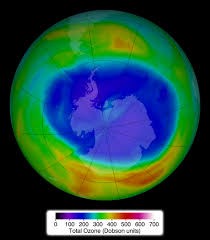A team of researchers have offered extraordinarily good news related to a three-decade-old environmental problem. They found that the ozone hole above the Antarctic region, which was identified first in the mid-1980s, is finally begun to shrink.
The findings of the study by researchers at the National Center for Atmospheric Research and the University of Leeds in the UK published in the reputed journal Science revealed that the ozone hole has shrunk by over 1.5 million square miles (about 4 million square km) since its peak in 2000. In fact, the rate of recovery has been different year-to-year, partially owing to the impact of volcanic eruptions.
Having taken the volcanic influence into account, the scientists have now concluded that the ozone layer really is on the road to recovery. They have forecast that the hole in the ozone layer will possible close permanently by mid-2000. The recovery is attributed to the 1978 Montreal Protocol, which introduced a ban on using chlorofluorocarbon (CFC) compounds responsible for destroying the ozone layer.
The ozone hole is not stable, but increases from August each year and reaches its peak size in October.
For their study, the scientists followed the yearly opening of the hole every September from 2000 to 2015. By choosing September instead of October, the scientists got a clearer picture of the damaging effects of chlorine. During this time of year, chlorine chemistry is in full control of the pace at which the hole increases, the Washington Times reported.
According to MIT atmospheric scientist Susan Solomon, who is the lead author of the study, in terms of medical analogy, initially condition of the patient was deteriorating rapidly. After a period, the condition stabilized, and now, the patient is really on the path of recovery. She further said that the vital ozone layer of the Earth (patient) is improving directly owing to our choices and policies.
The ozone hole actually denotes a region of the stratosphere over Antarctica, at an altitude of roughly between 10 and 25 kilometers, where the ozone is completely destroyed completely. Nevertheless, some ozone is left behind above as well as below this region, resulting to a 40 or 50 percent loss of ozone in a very large area of the atmosphere.
While there is no doubt that the ozone layer has depleted in the stratosphere across the globe, Antarctica presents an exceptionally favorable condition for this phenomenon during spring. This is primarily because the extremely cold polar stratospheric clouds present a surface that allows chemical reactions, resulting in the creation of destructive forms of chlorine.
Watch the video showing ozone hole over the Antarctica beginning to heal below:



























